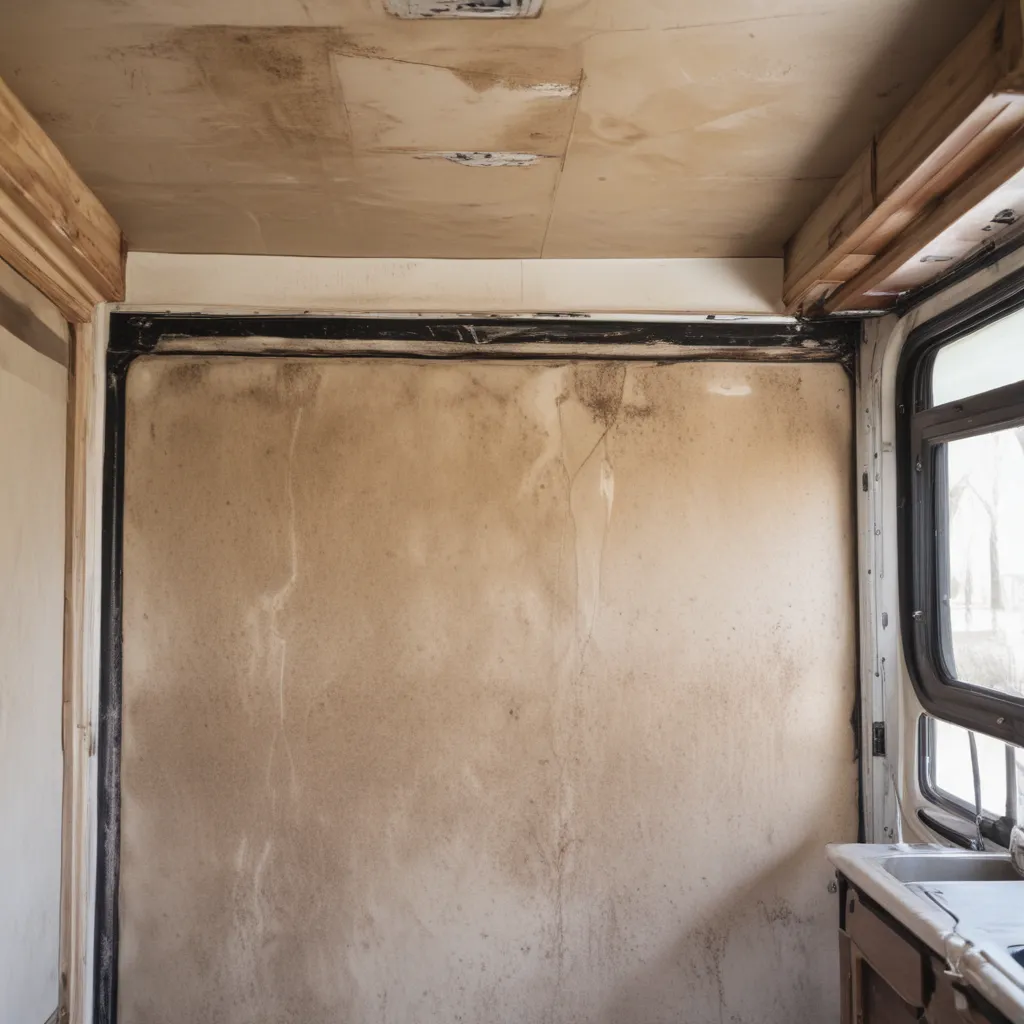
The Surprising Culprit Behind RV Disasters
Have you ever taken your beloved RV out for a grand adventure, only to discover that a sneaky intruder has set up shop in the corners and crevices? I’m talking about the dreaded M-word – mold and mildew. These tiny terrors can turn your home-on-wheels into a moldy nightmare, ruining your trip and costing you a small fortune in repairs.
As the owner of an RV repair shop in Orange County, California, I’ve seen my fair share of mold and mildew horror stories. But don’t worry, I’m here to share my insider knowledge and give you the tools to keep your RV in tip-top shape.
Understanding the Mold and Mildew Menace
Mold and mildew are not just unsightly – they can pose serious health risks, especially for those with respiratory conditions or weakened immune systems. These microscopic fungi thrive in damp, humid environments, and RVs provide the perfect breeding ground.
The real problem is that RVs are inherently vulnerable to moisture issues. From leaky seals and poor ventilation to condensation buildup, there are countless ways for water to sneak in and create the perfect conditions for mold and mildew to flourish.
But here’s the kicker: these fungal invaders don’t just content themselves with surface-level growth. Oh no, they can burrow deep into the materials of your RV, compromising the structural integrity and making them a nightmare to remove.
Spotting the Signs of Mold and Mildew
The first step in keeping your RV mold-free is to be on the lookout for the telltale signs. Keep your eyes peeled for discolored patches, musty odors, and any visible growth in damp areas like the bathroom, kitchen, or storage compartments.
But here’s the catch – mold and mildew can be sneaky buggers, hiding in the nooks and crannies where you least expect them. That’s why it’s crucial to perform regular, thorough inspections, using a flashlight to peer into every corner and crevice.
And let me tell you, once you spot those fuzzy green or black patches, it’s time to spring into action. Mold and mildew are like unwanted house guests – the longer they stick around, the harder they are to evict.
Preventing the Mold and Mildew Invasion
Now, the key to keeping your RV mold-free is all about prevention. It’s like the old saying goes – an ounce of prevention is worth a pound of cure. And let me tell you, the “cure” for a mold and mildew infestation can be a real pain in the you-know-what.
So, what’s the secret to RV mold and mildew prevention? It all comes down to controlling moisture and promoting proper airflow. Here are some of my top tips:
Seal and Inspect
The first line of defense is to thoroughly inspect your RV for any cracks, holes, or gaps that could be letting in water. Be sure to check around windows, doors, vents, and seams, and use a high-quality sealant to plug any potential entry points.
Ventilate, Ventilate, Ventilate
Proper ventilation is crucial in the fight against mold and mildew. Make sure your RV’s fans, vents, and air conditioning system are in tip-top shape and running at full capacity. Open windows and hatches whenever possible to encourage air circulation.
Dehumidify and Desiccate
Controlling humidity is a must. Invest in a reliable dehumidifier and keep an eye on those moisture levels. You can also use desiccant packs to absorb excess humidity in storage compartments and other enclosed spaces.
Clean and Disinfect
Regular cleaning and disinfecting are essential for maintaining a mold-free RV. Use a mild bleach solution or a dedicated mold and mildew cleaner to scrub down surfaces, and be sure to thoroughly dry everything afterwards.
Monitor and Maintain
Staying on top of RV maintenance is key. Regularly check for any signs of water leaks or condensation buildup, and address issues as soon as they arise. And don’t forget to change out your air filters and clean your HVAC system regularly.
Dealing with Mold and Mildew Outbreaks
Now, let’s face it – even with the best prevention practices, mold and mildew can sometimes find a way to sneak in. And when they do, it’s a battle royale.
I once had a client who brought in their RV after a particularly wet camping trip. They thought they’d caught the problem early, but when we did a deeper inspection, we found that the mold had already spread to the walls, insulation, and even the cabinetry. It was a real nightmare.
In cases like these, it’s crucial to act fast and bring in the professionals. Attempting to DIY a mold remediation job can often make the problem worse, as you risk spreading the spores and exposing yourself to dangerous toxins.
Instead, reach out to an experienced RV repair shop like https://orangecountyrvrepair.com/ for a comprehensive mold and mildew treatment plan. We have the specialized equipment, expertise, and cleaning solutions to safely and effectively eliminate the problem.
Safeguarding Your Investment
At the end of the day, your RV is a significant investment, both financially and emotionally. The last thing you want is for mold and mildew to ruin your adventures and drain your bank account.
By being proactive, staying vigilant, and calling in the experts when needed, you can keep those pesky fungi at bay and enjoy your RV for years to come. Trust me, it’s a lot less stressful than dealing with a full-blown mold infestation.
So, the next time you hit the open road, remember to keep a close eye out for those tell-tale signs of mold and mildew. And if you ever find yourself in a moldy situation, don’t hesitate to reach out to the team at https://orangecountyrvrepair.com/. We’re here to help you keep your RV in pristine condition, no matter what Mother Nature throws your way.
